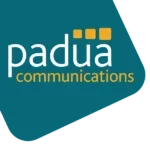Feature opportunities are a great way to raise a profile and help position the person quoted as an expert. If you are unsure what a feature is: they tend to be longer articles, they could be a how-to or a piece that drills down into an issue. They may include comments from three or four experts in relevant businesses. In printed media, they are the pieces that tend to be in the middle of a magazine and run across several pages.
Although features are not rigidly linked to the news agenda, they can be influenced by what is happening in your industry. They are a great platform for you or someone at your company to showcase what they know best.
Here are a few techniques that you can use to get the most out of a feature opportunity:
- Spot the opportunity
You may be subscribing to a features database where you can monitor opportunities as they arise. If not, pick your top target publications/ sites and reach out to the features editor to see what they have planned. Make sure your feature is relevant to the publication’s audience and send a few paragraphs over to see whether there is some interest. Once you have spotted an opportunity or piqued a journalist’s interest, you need to move fast.
- Get more details about the feature opportunity
Check the opportunity and deadline with the journalist. Ask them what they are specifically trying to cover and whether there is an angle that they would like to focus on. If possible, get some questions from them. Ask who else is being mentioned in the piece, or who has been approached. Some journalists won’t share this information, but it’s worth asking. Try and find out as much about the opportunity as you can up front, whether it is going into print or online and the name of the publication or site that it is for.
- Know your audience
Research the publication or site in detail. If you have time and it is a print publication, get a copy sent to you or go and buy one so you can take a look through. A feature is normally a regular item and you will be able to see previous examples of length, box-outs and the general tone of the publication. You can also get a feel for who the reader is. Using this information, you can match the tone when creating your response.
- Do your homework
Check out the journalist who is writing the piece. Again, you will be able to get previous examples of their work so you can see if they have any tells. You want to make it easy for them to lift your response and place it in the piece they are writing. If you can match their style and tone, more of your response is likely to be used.
- Prep your spokesperson
Depending on the info you have gleaned about this opportunity, you can decide who would be the best person to put forward for this piece. Is it you, or is there someone better? If it is a feature about International Women’s day and leadership, for example, push your female board member. If it’s about a highly technical matter, see if you can find an expert in that area at your company. Give them questions to think about in advance and then make a call the following day to interview them yourself.
- Plan your response and future content
Take time to run through the questions and record your call. Some people are naturals and once they start talking will come out with amazing facts. But remember what the journalist is after. Use the interview as an opportunity to create content for your blog and for social media, but make sure when you write the copy for the journalist, you are meeting their brief, and using the questions they sent you.
- Write, read, edit
Type up the piece and keep it in the format of questions and answers, especially if the journalist gave you some. Write, read, edit, then re-read and re-write until you are happy. Manage your expectations – it’s unlikely that all of it will be used, especially if it is for a printed publication with a fixed word count. In addition, the copy you are providing might be cut down or paraphrased. Explain to your spokesperson that you don’t have control of the final piece. Whatever you do, don’t turn it into a sales pitch during the editing process.
- Send before the deadline
Once approved, and after ensuring any links in the copy work properly, forward as a Word doc to the journalist, well before the deadline. Ask if they would like supporting images or any further information and have those ready to go over as quickly as possible. You can also ask if they know when the piece will be published. You rarely get a reliable answer to this, so you need to check yourself if you don’t have a clippings service in place.
If you are successful, features are a great platform for you to showcase thinking, products and services. Just as importantly, if you do a good job, the journalist will remember this too. If they write about your industry again, you may find you are contacted for input, so take your time to do a good job.
Case study
Recently, we worked with our client Red Olive on a feature opportunity. The whole piece was turned around within a week and when the coverage appeared, practically all of our input was used (over 50% of the finished article). You can see the feature on the croner-i website.
If you need some help with media outreach or content creation, please click the button below to get in touch with us.
Free marketing & PR resources
Sign up we’ll send you our free marketing and communications newsletter packed with helpful advice, along with details of our events.










